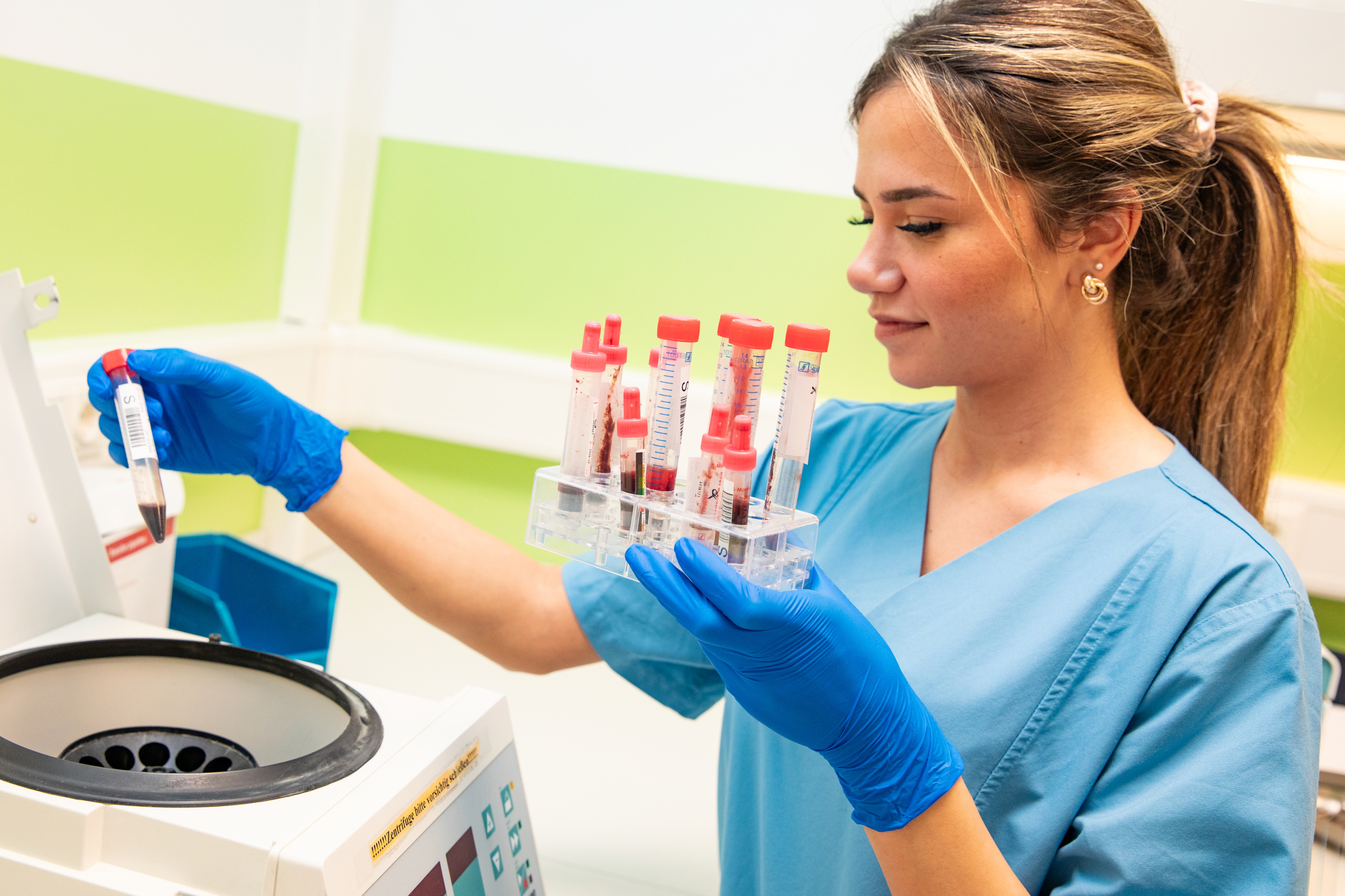Prevention of cardiovascular diseases: MHH Children's Hospital diagnoses and treats lipid metabolism disorders in children and adolescents.

Medical assistant Berfin Yildiz places a sample tube in a centrifuge. Copyright: Karin Kaiser / MHH
In a fat metabolism disorder, also known as a lipid metabolism disorder, the ratio of fats in the blood is out of balance. Symptoms of the disorder, which is often accompanied by a significantly increased cholesterol level, often only appear in advanced adulthood. However, there are also children and adolescents who are affected without realizing it. They therefore have a high risk of developing cardiovascular disease as young adults. These young people have a point of contact at the Children's Hospital of Hannover Medical School (MHH): the Pediatric Metabolic Medicine Department headed by Professor Dr. Anibh Das. The team there specializes in lipometabolic disorders in children and offers the entire spectrum of diagnostics and therapy. The department has now been certified as a “DGFL Lipid Outpatient Clinic” by the German Society for Lipidology (DGFL). It is the first pediatric center of its kind in northern Germany.
Detecting high levels early
If the lipid metabolism in children does not function properly, this can damage the blood vessels and lead to a heart attack or stroke in young adulthood. “These diseases are preventable if high lipid levels are detected and treated early,” explains Professor Das. This is because the levels can be lowered in most cases. “That's why detection in childhood is important for the rest of life.” Around 200 children and adolescents with a lipid metabolism disorder are referred to the Pediatric Metabolic Medicine department every year. Most of them have previously been diagnosed by their pediatrician with high lipid levels. Others have already been diagnosed with a lipid metabolism disorder in their close family circle - in this case, the young people are offered a so-called cascade screening to identify other affected people in the family. High blood lipid levels, especially cholesterol, can have various causes. "In many of our patients, they are genetic. On the other hand, an unhealthy diet and too little exercise are also responsible for high blood lipid levels," explains Professor Das.
Precise diagnostics
In the lipid outpatient clinic, children and adolescents first undergo a comprehensive examination. Based on a blood analysis, an assessment of the vascular walls, an electrocardiogram and other examination methods, the specialists draw up a precise diagnosis and a structured assessment of the health risks. "If the lipid metabolism disorder has a genetic cause, we can significantly reduce the lipid levels with medication. For everyone else, we help them to switch to a healthier lifestyle with more exercise and a more balanced diet," says Dr. Christian Menke. He and his colleague Dr. Julya Hempel and private lecturer Dr. Sabine Illsinger are medical members of the team. Certified nutritionists are also part of the lipid outpatient clinic for children. There is close cooperation with the genetics, pediatric cardiology and pediatric sonography/pediatric radiology departments at the MHH.
Prophylaxis for adulthood
“Early diagnosis and treatment is ultimately prophylaxis for adulthood,” explains Dr. Menke. This is why the approach of early detection and better treatment of cardiovascular diseases is also part of the German government's health strategy, alongside a healthy diet in childhood. Hereditary dyslipidemia, or familial hypercholesterolemia (FH), is the most common genetic metabolic disorder. However, only around five percent of those affected by an FH mutation are diagnosed in Germany. Lipid screening for the early detection of FH has so far been offered as part of the J1 pediatric check-up. The children are then between 12 and 14 years old. However, many young people no longer attend J1. “We are therefore in favour of offering lipid screening at the U9, i.e. when children are five years old,” emphasizes Professor Das. This is because the U9 screening is attended 98 percent of the time and therefore offers much greater opportunities for early detection.
Text: Tina Götting